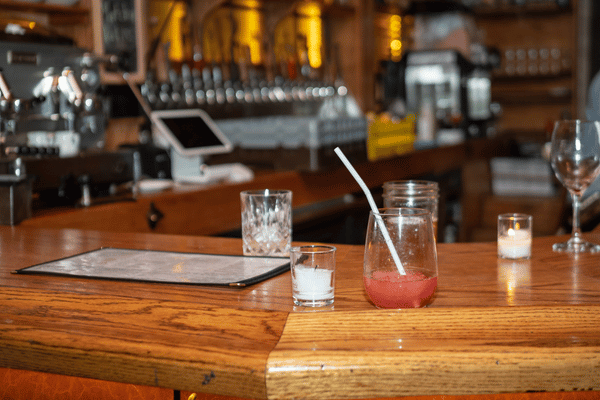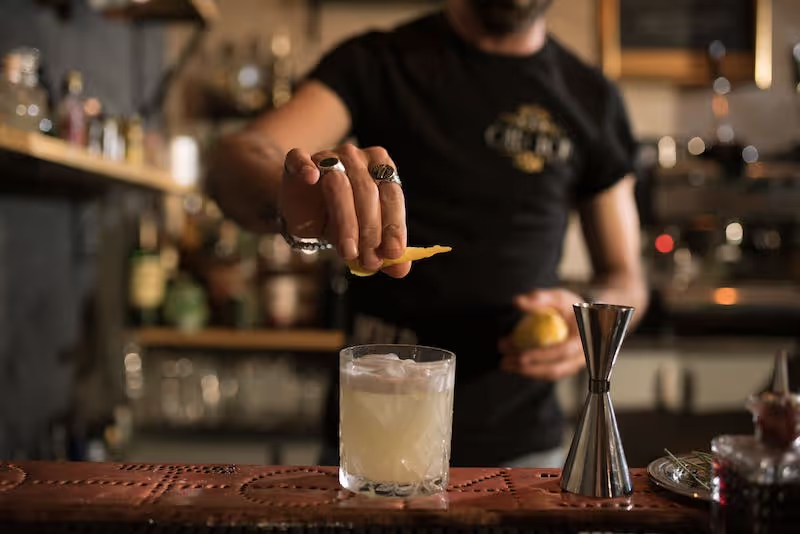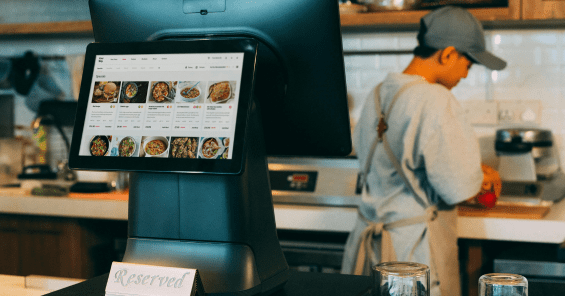

What is a Barback?
Discover the critical role of a barback in ensuring a bar operates smoothly. Learn about their key responsibilities, the differences between barbacks and bartenders, and essential skills needed for the job. Find out how to hire and train a barback to improve service efficiency, manage inventory, and reduce waste, ultimately boosting your bar's profitability.
When you step into a smoothly operating bar where everything is perfectly in place and service runs like clockwork, there's a good chance a skilled behind-the-scenes team is helping drive that success.
Among them is the barback, a role that’s essential for setting up the bar for efficiency. Whether you’re planning to open a bar, considering hiring a barback to improve operations, or looking to become one, this guide will tell you everything you need to know.
Tip Pooling Calculator
Eliminate the guesswork from your restaurant’s tip distribution with our Tip Pooling Calculator, designed to allocate tips based on hours worked by both FOH and BOH staff.

Defining the Role: What is a Barback?
Barbacks are jack-of-all-trades, keeping the bar well-stocked, clean, and organized. Their responsibilities include replenishing garnishes, preparing clean glasses, and refilling ice bins. As patrons come and go, the barback diligently maintains the cleanliness of the space and promptly restocks any items that are running low.
Barback vs. Bartender
The primary difference between barbacks and bartenders lies in their responsibilities.
Barbacks primarily focus on the logistics and preparatory work that underpins a bar's day-to-day function, such as restocking liquor, preparing mixers, cutting garnishes, and maintaining overall cleanliness. This allows bartenders to focus on serving customers with the tools they need rather than restocking or cleaning during operating hours.
Meanwhile, bartenders engage directly with customers, crafting and serving drinks, and often managing the financial transactions of the bar. This clear division of tasks allows bartenders to excel in customer service and drink preparation, while barbacks take on a variety of support tasks to maintain proper flow.
Barback Duties and Responsibilities
So what does it take to be a barback? What tasks should you give your new hire?
Understanding the scope of a barback's role is crucial for both potential hires and employers to ensure clear expectations.
Let’s take a look at a few responsibilities broken down into different segments of their shift, outlining certain taks before, during, and after service.

Before Service
Before doors open, a barback's job is to prepare the bar for the upcoming shift. This includes ensuring all supplies, such as liquors, beers, wines, and mixers are properly stocked.
They also prepare all necessary tools and glassware, ensuring everything is clean, organized, and ready to use. This often means placing tools in consistent locations where bartenders expect to find them.
For example, bartenders will then know to find the shakers, stirring spoons, jiggers, and strainers in the speed rail, napkins at the end of the bar, and mixing glasses in the back bar.
Barbacks also often handle the preparation of garnishes, like slicing lemons and limes, and may assist in setting up the bar area, arranging bottles and ingredients for easy access.
During Service
Barbacks are always moving – clearing, cleaning, and restocking. For many, this role is a stepping stone to becoming a bartender. Serving in a supporting role is a great way for them to watch and learn from the bartenders they work with.
By mastering these foundational aspects, barbacks develop critical skills and a thorough understanding of the bar environment, better preparing them for the complex responsibilities of bartending.
After Service
Once the bar closes, it’s time for staff to reset their stations for the following day.
For barbacks, this includes cleaning the bar, back bar, and all used equipment. They may also perform end-of-night inventory management to prepare for the next day.
Common Barback Responsibilities & Duties
- Restocking liquor, beer, wine, and other bar supplies
- Preparing and replenishing garnishes
- Cleaning and organizing the bar area
- Washing glassware and utensils
- Assisting bartenders with drink preparation as needed
- Handling trash and recycling
- Managing inventory and alerting the manager to low stock levels
- Ensuring tools and equipment are clean and functional
- Sweeping and mopping floors, especially in the bar area
- Supporting bartenders during rush periods to maintain service flow

Top 3 Signs Your Restaurant or Bar Needs a Barback
Service is Slow: If your patrons are finishing their appetizers before their cocktails arrive, it's a red flag. Slow service often stems from bartenders being overtaxed with tasks like cleaning and restocking, tasks that a barback can efficiently manage, ensuring drinks are served swiftly and guests remain happy.
Inaccurate Inventory Management: When bartenders frequently have to dash off to replenish supplies during service, it disrupts the flow and can lead to running out of essentials like your best-selling liquor or mixers. A dedicated barback keeps track of stock, ensuring everything from spirits to garnishes is adequately supplied and within reach, preventing those awkward "we're out of that" moments with customers.
High Levels of Waste: Cluttered workspaces lead to accidents and inefficiencies, like spilled drinks and broken bottles, which contribute to unnecessary waste. A barback helps maintain a tidy and organized bar environment, streamlining operations and reducing waste. They also control the preparation and storage of garnishes, ensuring they are used efficiently and stay fresh, further cutting down on waste and costs.
How to Hire a Barback
When hiring a barback, consider how this role will support your bar's overall operations and efficiency.
Start by clearly defining the responsibilities the barback will have in your establishment, such as assisting with inventory management and maintaining cleanliness throughout shifts.
Craft a job description that highlights these duties and emphasizes the importance of supporting the bartending team to create a seamless customer experience. During the interview process, assess candidates based on their ability to handle the physical demands of the job, their willingness to work behind the scenes, and their understanding of the fast-paced nature of bar work.
By taking these factors into account, you can find a barback who is well-suited to help your bar operate smoothly and efficiently.
Top Skills Every Barback Should Have
When hiring a barback, prioritize candidates with excellent organizational skills and the ability to efficiently multitask in a bustling environment. Effective communication and a basic grasp of inventory management are also vital for keeping operations smooth and reducing waste.
Key skills every barback should have include:
- Organizational kills to maintain supplies neatly and accessibly
- Attention to detail to ensure precise task execution
- Efficiency in high-pressure situations to handle multiple tasks quickly
- Communication to synchronize effectively with the team
- Inventory Management to avoid shortages and ensure availability of supplies
- Commitment to Cleanliness to maintain a sanitary bar environment
How to Train a New Barback
Training a new barback involves teaching them the specific procedures and standards of your bar, including how to manage inventory, clean and organize the bar area, and support bartenders during service.
Emphasize the importance of minimizing waste and maintaining efficiency, as these factors directly impact the bar’s profitability. Regular feedback and ongoing training can help your barback become a valuable asset to your team, ensuring that they contribute effectively to reducing waste and boosting profit margins.

MarketMan is a cloud-based inventory management software for restaurants and bars that takes the guesswork out of running all back-of-house operations. Streamline everything from inventory and vendor management to reporting and budget all on one unified platform. Discover how Toro Loco sports bar combats theft with MarketMan.
Book a demo and learn how MarketMan can help your bar thrive today!
Author
Contributors
If you have any questions or need help, feel free to reach out
Don't miss out on maximizing your restaurant's profits! Calculate your ROI with MarketMan
Join over 18,000 restaurants and get the hottest restaurant tips delivered to your inbox
You may also be interested in
Ready to get started?
Talk to a restaurant expert today and learn how MarketMan can help your business






